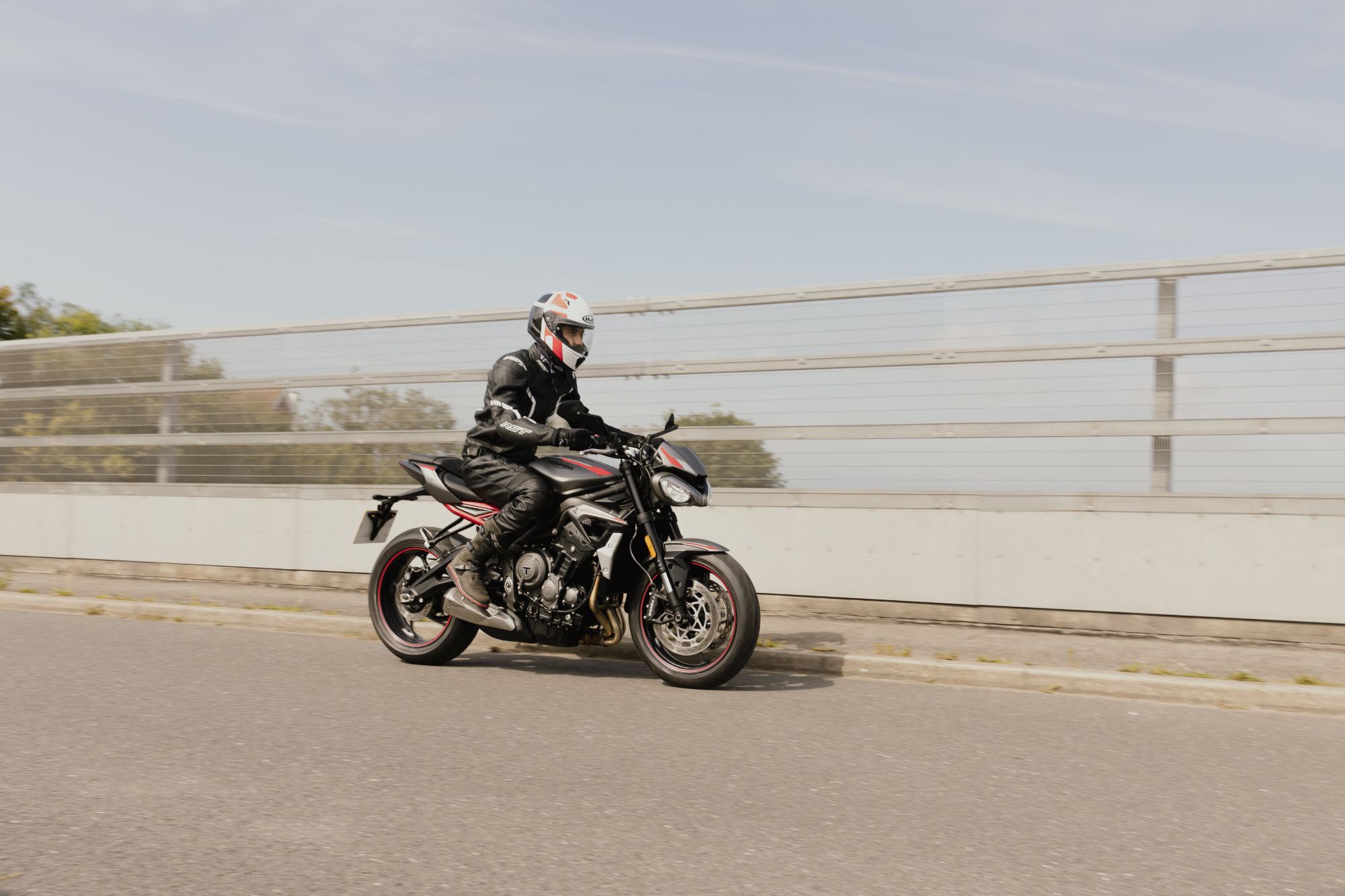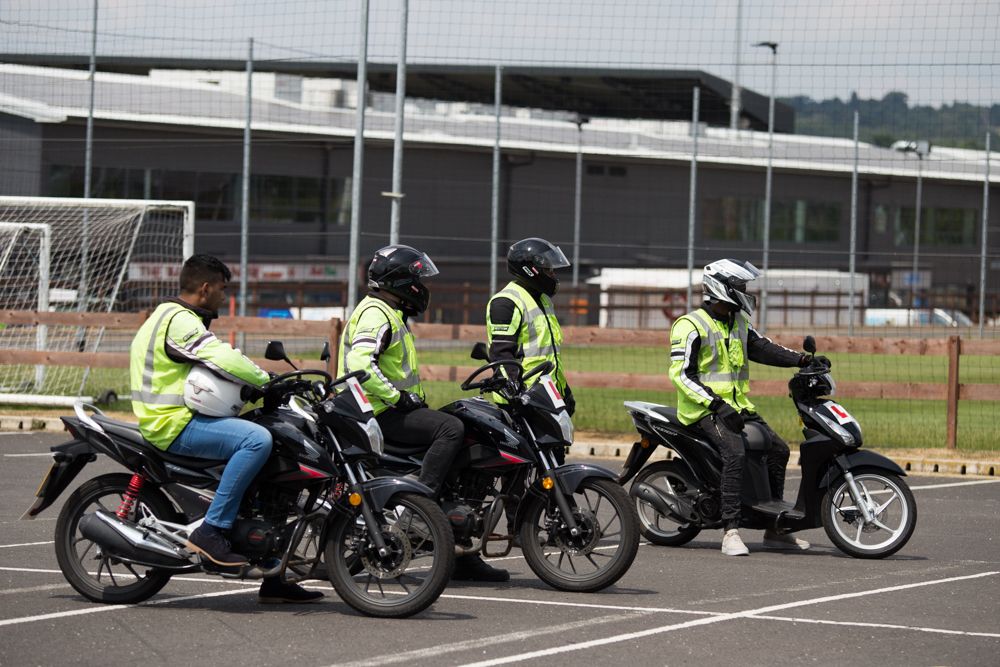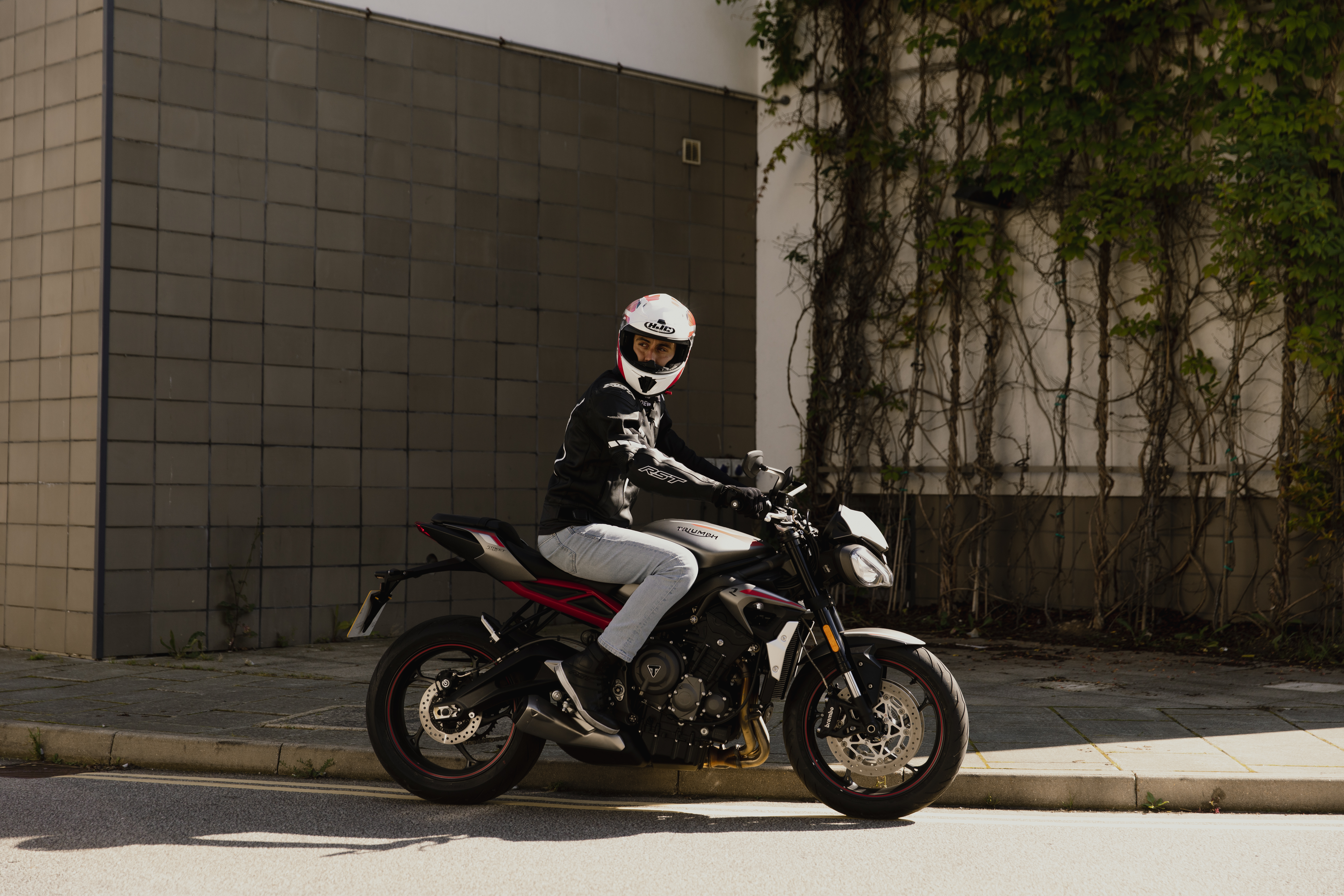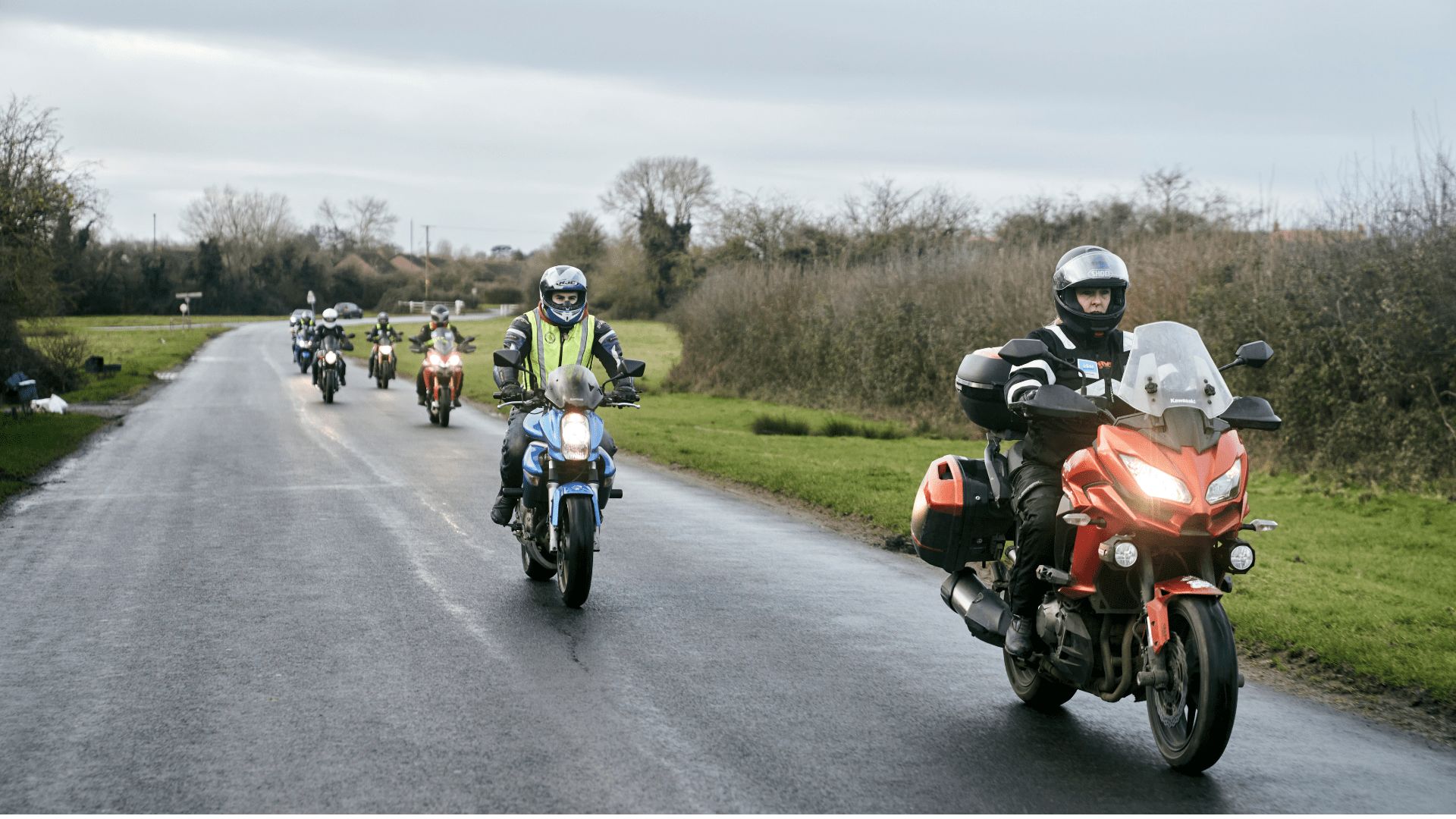back to the blog
How To Ride a Motorcycle

Alan Dowds · January 02, 2025
Do you want to know how to ride a motorcycle? You’ve come to the right place. At RideTo, we’ve helped thousands of new riders experience the cost savings, efficiency, and thrill of motorcycling. Learning to ride is one of the most liberating and enjoyable skills you can develop.
In this guide, we’ll walk you through everything you need to know—from understanding the gears to building confidence on the road. Whether you’re a complete novice or someone considering your first CBT (Compulsory Basic Training), this guide is designed to make your journey into motorcycling smooth, safe, and enjoyable. Let’s get started!
Why Learn to Ride a Motorcycle?
Riding a motorcycle is more than just a way to get around—it’s a lifestyle that offers unmatched freedom, adventure, and practicality. In the UK, it’s not only a great way to make your daily commute faster and more enjoyable but also significantly cheaper than driving a car and often more affordable than public transport.
Motorcycling allows you to explore the country at your own pace, avoid traffic jams, and save on parking fees. Plus, a motorcycle opens up opportunities to travel beyond British roads, making it easier to discover new destinations across Europe and beyond.
Essential Gear for New Motorcycle Riders
Many new riders underestimate how crucial gear is, yet having the right gear is essential for safety, comfort, and confidence. You’ll feel much more confident learning to ride if you’re properly protected, and at a good temperature.
The foundation of any rider’s kit is a high-quality helmet, which protects your head in the event of an accident, reduces wind noise, and helps you stay focused on the road. Check out our helmet collection to find one that fits your needs and style.
Equally important is a motorcycle jacket that offers both abrasion resistance and impact protection. Jackets are typically made with reinforced materials like leather or textile blends, designed to safeguard your upper body. Explore our range of jackets to keep safe and stylish.
Gloves are another must-have. They protect your hands from weather conditions, vibrations, and potential injuries in case of a fall. From leather to textile gloves, our glove collection has options suitable for all seasons.
Riding also requires durable motorcycle boots that offer ankle support and grip. These boots are designed to withstand impact and provide traction when you need it most. Find your ideal pair in our boot section.
Lastly, a pair of reliable motorcycle trousers ensures leg protection with reinforced padding and abrasion-resistant fabric. Our trouser selection has styles that blend safety and comfort for every type of rider.
Investing in quality gear is essential for any new rider’s safety and comfort. The minimum clothing you should invest in when learning to ride should be a helmet and CE-approved motorcycle gloves. However, a complete set - including a helmet, jacket, gloves, and boots - offers the best protection against weather and road conditions, improving your riding experience, especially on longer journeys or commutes.

How to Ride a Motorcycle
In this part of the blog, we will help guide you through the first steps of how to ride a motorcycle. Make sure to pay attention and read this thoroughly so you get the most out of this guide. Riding a motorcycle is an extremely rewarding activity and hobby, learn the essentials right once and enjoy riding forever.
Mounting the motorbike
Before you start learning to ride, properly mounting the motorbike is a vital first step. Approach your motorbike from the left, holding the handlebars firmly for stability, and swing your leg over carefully. Make sure your feet are planted securely on the ground before adjusting your seating position. This step might seem simple, but it helps set a solid foundation for control and balance.
Practising balance on a motorbike
One of the most common reasons people struggle with or fail their CBT (Compulsory Basic Training) is difficulty balancing on the motorbike. Motorbikes are significantly heavier than bicycles, so it’s useful to first practise balance on a regular bicycle. This helps improve your core stability and gets you comfortable with handling two-wheeled vehicles. Once on the motorbike, practice keeping your balance at low speeds, as slow-speed manoeuvring is essential for safe riding.
Understanding the throttle and brakes
Getting familiar with the throttle and brakes is crucial for controlling speed. The throttle, located on the right handlebar, regulates the engine’s power, while the brakes ensure you can stop smoothly and effectively. Read more about motorcycle controls here to fully understand how to modulate the throttle and apply the brakes effectively. Practising with both will give you confidence and control as you learn to ride.
Mastering the clutch and gears
The clutch and gears are essential components for controlling a manual motorbike’s power and speed. On manual bikes, the clutch, found on the left handlebar, allows you to change gears smoothly. To build confidence, practice easing the clutch out slowly to get a feel for the friction point - this is where power starts transferring to the wheels. Learning gear control is also vital for managing different speeds, and it’s a key skill for any rider. Check out our guide on improving clutch control and changing gears on a motorbike to master this skill.
If you need additional support, consider a gear conversion course, which is especially helpful for those transitioning from an automatic to a manual bike, as it allows you to focus specifically on clutch and gear control.

Starting the motorcycle
Starting your motorcycle is the next essential step. Make sure the bike is in neutral and that you’ve located the ignition switch. Once your bike is on, let it idle for a few moments to warm up the engine, especially in colder weather. This ensures the bike is ready for smooth operation when you’re set to move.
How to turn on a motorcycle
Turning on the bike involves a few simple but important steps. First, ensure the kill switch is off, then insert the key and turn the ignition. If your bike has an electric starter, press the start button; if not, use the kickstarter. Once the engine is running, check your mirrors and prepare for your ride.
How to pull away, slow down and stop
When you’re ready to pull away, engage the clutch, select the appropriate gear, and gradually ease off the clutch while gently rolling on the throttle. This will allow you to start moving smoothly. To slow down or stop, gradually close the throttle and apply the brakes as needed. Pull in the clutch to disengage power as you come to a stop, and place your feet down for stability.
Mastering these basics will make you feel more at ease on your motorbike and better prepared for safe riding.

Getting Motorcycle Training
If you’re looking to get a motorcycle licence, it’s essential to understand each step of the process, from introductory training to obtaining higher licences. Here’s a breakdown of each stage:
-
Introduction to Motorcycling (ITM): The ITM course is an excellent starting point for complete beginners, who don’t want a whole day of training. It’s designed to build initial confidence and familiarity with motorbikes, covering the basics of handling and riding. Although not mandatory, it can be a helpful way to ease into motorcycling, especially if you’re nervous about riding for the first time.
-
Compulsory Basic Training (CBT): The CBT is the first mandatory step for anyone wanting to ride a motorbike on UK roads. This one-day course introduces fundamental skills like balance, throttle control, and road awareness. Completing your CBT allows you to ride a 125cc motorbike with L-plates, but it is not a full licence so make sure you’re aware of all the limitations.
-
Gear Conversion Course: If you’re looking to swap over to a manual motorcycle after passing your automatic CBT or if you feel like you need additional practice, the Gear Conversion course is designed to help riders master clutch and gear control on a manual bike. It’s particularly helpful if you plan to progress to higher licences, which generally require proficiency with manual gear operation.
-
Higher Licences/ Full Licences: For those wanting to move up the motorcycle licence chain from a CBT to ride larger bikes without restrictions, there are several licence options. The A1 Licence allows you to ride a 125cc bike without L-plates and is available from age 17. The A2 Licence is available from age 19 and permits you to ride bikes up to 35 kW. Finally, the Full A Licence, or “unrestricted licence,” is available from age 24 (or 21 if you’ve held an A2 for two years) and allows you to ride any motorcycle.
Each stage of training builds essential skills, helping you gain the experience and confidence needed to ride safely and responsibly. Following this structured approach ensures you’ll be prepared for both the freedom and responsibilities of motorcycling on UK roads.

FAQs
How should a beginner learn to ride a motorcycle?
The best way for beginners to learn to ride is through a structured course, like the Compulsory Basic Training (CBT) in the UK. This one-day course teaches you the basics of motorcycle control, safety, and road awareness, all under the guidance of trained instructors. Plus, practising on a quiet road or empty parking lot after training will help you feel more confident and relaxed as you build those skills. It’s all about starting small and working your way up!
Is it easy to ride a motorcycle?
Riding a motorcycle can be as easy or as challenging as you make it! While it takes practice to get comfortable with the controls like the throttle, clutch, and brakes many people find that the learning curve isn’t as steep as they expected. With patience, some good training, and regular practice, you’ll likely pick it up faster than you think. Remember, everyone starts as a beginner, and this section of the CBT builds your confidence. Check out our Peace of Mind Cover for an added layer of protection in case you need further training.
How to balance a motorcycle for beginners?
Balancing on a motorcycle is a bit different from balancing on a bicycle. Since motorcycles are heavier, balance starts with a strong stance and a steady grip on the handlebars. Practicing on a bicycle first can help improve your core stability. Focus on keeping your body relaxed, as stiffness can throw you off balance. With time, your body will naturally adapt to the bike’s weight and movement.
Which foot goes down first on a motorcycle?
Typically, most riders put their left foot down first. This leaves your right foot free to manage the rear brake if needed, helping to keep the bike stable. However, you’ll soon find your own rhythm and preference. It’s about what feels natural and keeps you balanced.


